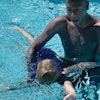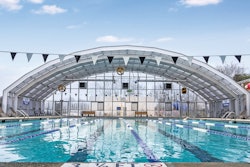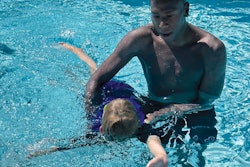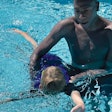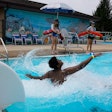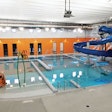Despite widespread efforts to eradicate water-related illnesses, outbreaks of cryptosporidium in public pools, splash pads and waterparks doubled between 2014 and 2016, according to a recent report from the U.S. Centers For Disease Control and Prevention.
At least 32 outbreaks caused by Cryptosporidium parvum (also known as "crypto") linked to swimming pools or water playgrounds in the U.S. were reported in 2016, compared with 16 outbreaks in 2014. By comparison, 20 crypto outbreaks linked to swimming were reported in 2011, 16 in 2012 and 13 in 2013.
Those outbreaks highlight the ongoing challenges that public aquatic facilities face with crypto due to how difficult it is to kill and the small number of germs needed to cause infection. For example, Arizona identified 352 people sick with crypto from July to October 2016, while there were no more than 62 cases for any one year from 2011 through 2015. Ohio identified a staggering 1,940 people ill with crypto in 2016, while there were no more than 571 cases for any one year from 2012 through 2015.
The parasite, technically known as an oocyst (pronounced "oh-oh sist"), features a hard protective shell and spreads when people swallow something that has come into contact with the feces of a sick person, such as pool water contaminated with diarrhea. It can be fatal for people with compromised immune systems.
According to the CDC report: "Crypto is the most common cause of diarrheal illness and outbreaks linked to swimming pools or water playgrounds because it is not easily killed by chlorine and can survive up to 10 days in properly treated water. Swallowing just a mouthful of water contaminated with crypto can make otherwise healthy people sick for up to three weeks with watery diarrhea, stomach cramps, nausea or vomiting, and can lead to dehydration."
Spreading Concern
The report was released on May 18 and has since led to a firestorm of coverage, public concern and advisories from public health officials across the U.S and abroad.
"Most of us love to spend time in the pool, and we assume pool water won't make us sick. And generally that's true. Most pool operators do a great job of maintaining a healthy swimming environment," said Dan Luebbert, assistant director of the Platte County Health Department (Kansas City, Mo.) in an interview with the Kansas City Star. "Unfortunately, there are some germs that are tough enough to survive in even the best maintained pools. That's why it's so important for swimmers to be responsible."
Although crypto contamination can occur in any body of water, it is almost exclusively a problem for public aquatic facilities, including not only pools and spas, but splash pads and waterparks as well. As indicated by the numbers above, a single outbreak can make hundreds of people sick. According to the CDC, it is not clear whether the number of outbreaks has actually increased or if improved surveillance and laboratory methods are leading to better outbreak detection.
In 2010, the CDC launched first U.S. DNA fingerprinting–based tracking system for illness caused by a parasite. Called CryptoNet, the system helps states detect and control outbreaks by identifying which types of crypto are infecting people. For example, Arizona state officials used CryptoNet in 2016 to confirm the spread of a particular type of crypto in multiple facilities in the Phoenix area.
The CDC is currently working to upgrade CryptoNet with more advanced DNA fingerprinting techniques. The improved system will enable examination of results combined with information on patients' activities prior to infection, which CDC officials believe will help the CDC and its public health partners develop more effective strategies in preventing outbreaks.
Preventing crypto outbreaks is also one of the objectives of the Model Aquatic Health Code. First published in 2014, the voluntary set of guidelines calls for secondary "pillars" of sanitation, specifically UV and ozone, as a way to reduce halogen levels, eliminate disinfection byproducts and prevent infectious outbreaks, especially crypto — which, while highly resistant to chlorine treatment, is readily killed by ozone.
According to the MAHC there's a key distinction between the terms "secondary" and "supplemental": "All secondary disinfection systems must provide a minimum of 3 log (99.9 percent) inactivation of Cryptosporidium parvum in the full flow, prior to return of the water to the pool or aquatic feature at the minimum turnover rate. Secondary disinfection systems shall be designed to achieve a minimum 3-log (99.9 percent) reduction in the number of infective Cryptosporidium parvum per pass through the secondary disinfection system. Aquatic venues that do not require secondary disinfection systems may install supplemental treatment systems for the purpose of enhancing overall system performance and improving water quality."
Read the full story on our sister-site, AQUA Magazine here.











